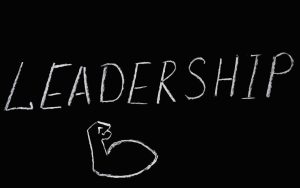Whether you’re looking for someone to head a department or a team, understanding different management styles is crucial. However, equally important is recognizing the unique strengths of potential leaders. The HIGH5 strengths test offers valuable insights into an individual’s natural talents, helping organizations make more informed decisions when selecting managers. By identifying a candidate’s top strengths, you can better align their inherent abilities with the management style best suited for your team and organizational culture.
Research by Gallup suggests that companies tend to make poor decisions in selecting an ideal manager 82% of the time.
Selecting a suitable manager is one of an organization’s most critical decisions, yet it’s made incorrectly 8 out of 10 times.
Another four-year research done by Leadership IQ found that the manager’s management style is more often than not incompatible with the organization’s culture.
When considering someone for a leadership role, three factors must be considered. The three factors are:
- Their personality
- Their capabilities
- How well their management style match your company’s culture?
This article will help you understand the ten different management styles in the workplace. We will also be sharing the advantages and disadvantages of each management style and when it is best suited for you.
What is a Management Style? Definition
A management style is an approach whereby a manager operates to accomplish their objectives. Your management style, deeply rooted in your personal strengths, may significantly influence how you handle projects and make effective decisions. The HIGH5 strengths assessment can reveal these inherent strengths, providing a foundation for developing a management style that authentically aligns with your natural talents. By understanding your top strengths, you can cultivate a management approach that not only feels genuine but also maximizes your effectiveness as a leader.
Depending on the circumstances, you may employ a range of management styles to support your career’s needs and goals.
Management style may vary considerably based on the organization, management level, industry, culture, and individual preference.
Both internal and external factors influence management styles.
Internal factors include:
- The organization’s culture and industry
- Organization’s policies and regulations
- Employee engagement, their work behavior, and personality
- The skill levels of the workforce
- The volume of work to be completed and how soon it must be completed
- The team and organizational goals
External factors include:
- Employment laws
- The economy
- Competition within the industry
- Suppliers and vendors
- Customers
Pro Tip From HIGH5
Leverage your strengths in your management approach. If the HIGH5 test reveals you’re strong in “Strategist,” use this strength to create long-term plans for your team. If “Empathizer” is a top strength, incorporate more one-on-one check-ins to understand and address your team’s needs.
Types of Management Styles in the Workplace
Management styles are typically divided into three distinct categories: autocratic, democratic, and laissez-faire. However, effective management goes beyond these broad categories and delves into individual strengths. The HIGH5 strengths assessment can provide valuable insights into which management style might come most naturally to you. For instance, if your top strengths include ‘Commander’ and ‘Problem Solver,’ you might excel in an autocratic style. Conversely, if ‘Empathizer’ and ‘Coach’ are among your top strengths, a democratic approach might be more suitable. Understanding your strengths through the HIGH5 test can help you refine your management style for optimal team performance.
The most controlling is the autocratic management style. In comparison, the least controlling is the laissez-faire management style.
There are unique subtypes of management styles within each of these categories. And each type comes with its own set of advantages and disadvantages.
Autocratic Management Styles
The autocratic management style adopts a top-down approach. It utilizes one-way communication from leaders to employees. It is the most controlling compared to the other management styles.
These organizations tend to make all the workplace decisions and expect unquestionable compliance.
The autocratic management approach includes clearly defined positions, structured hierarchies, and reporting processes. Employees have a clear understanding of who oversees what.
The subtypes of autocratic management style include authoritative, persuasive, and paternalistic.
Authoritative management style
Authoritative managers use a top-down method to lead others. Managers of this style make practically all the decisions themselves.
They will outline precisely what their subordinates must do and penalize those who do not comply.
They establish strict rules and standards that all employees must obey, and they rarely ask for employee feedback.
Managers keep a close eye on their subordinates while micromanaging their performance. These managers feel that if employees are not supervised, they won’t be able to work effectively.
Pros:
- The authoritative management style facilitates quick decisions while establishing clear responsibilities and expectations.
- Setting clear and realistic goals for inexperienced employees can help them work with a clear direction.
- Employees are productive when the manager is around.
Cons:
- An increase in employee dissatisfaction will lead to high turnover, a lack of employee development, and employee engagement.
- A mindset of “us” versus “them” will be established between employees and the management.
- Fresh and innovative ideas are usually rare with this style of management.
Persuasive management style
Like the authoritative management style, persuasive managers maintain control over any decision-making.
However, managers utilized their persuasive skills to convince others of their decision. They will explain that the decisions are made in the best interest of the team and organization.
Instead of directly instructing employees, persuasive managers would explain the rationale behind decisions. This way, the employees will feel that they are valued.
It will also make them feel that they play a role in the key business decisions made for the organization.
Pros:
- Employees will be more willing to accept top-down decisions if management establishes a better level of trust with them.
- Employees are more receptive to rationales and logic than the threat of punishment.
- There will also be less conflict or disagreements between the managers and employees.
Cons:
- Employees will continue to struggle under the limitations they are subjected to.
- The persuasive management style is still a one-way communication approach. It doesn’t allow employees to provide feedback for solution development or significant upskilling.
Paternalistic management style
A paternalistic manager acts in the best interests of their team members. Employees are usually referred to as “family” by the organization and are expected to show loyalty.
Managers of this style tend to make decisions on their own. They will rationalize to their team members that the decisions made are legitimate and made from a position of expertise.
While employees are informed about the decisions, they are not allowed to question them.
Pros:
- Paternalistic managers are concerned about their employees’ well-being. They make decisions based on what is best for the team.
- Employee education and development are encouraged, resulting in more satisfied and competent employees.
Cons:
- Employees may become overly reliant on management. This may lead to a lack of creativity and problem-solving skills.
- Employees who do not trust the ‘organization as family’ concept are likely to be disgruntled with this management style.
Democratic Management Styles
The philosophy behind the democratic management style is that two heads are better than one. Democratic organizations believe that everyone deserves a voice regardless of their rank.
Consultative, participative, collaborative, transformative, and coaching management styles are used to describe this management style.
Democratic managers value the diversity of ideas, views, and recommendations from their team. They recognize that individuals are essential for the team and organization’s success.
The final decision-making power still lies in the hand of the manager. Before making any long-term decisions, they will seek out and evaluate their team’s views, ideas, and opinions.
Consultative management style
Consultative managers ask their workers for their comments and thoughts regularly. They will take into account the perspectives of all members of their team.
They practice an open-door policy that encourages team members to voice out what works and what doesn’t in the organization. Managers will consider all the inputs provided by their subordinates.
But they are still the sole decision-maker.
Pros:
- Consultative leadership fosters trust and a stronger rapport between management and their subordinates. It will usually result in increased employee engagement and lower turnover.
- Management progresses with the team, learning from their employees’ thoughts, perspectives, and expertise.
- Innovation and the expression of one’s thoughts are welcomed, which leads to stronger problem-solving as a team.
Cons:
- Unlike an autocratic approach, the consultative leadership style involves more people in the decision-making process. Consulting team members to make an effective decision can be cumbersome and time-consuming.
- If a manager does not have excellent time management skills, their tasks or projects may get stalled.
- Employees may grow bitter and skeptical of the management if there is an assumption of favoritism or superiors who do not listen to their viewpoints.
- High dependency on this approach may cause employees to lose faith in their leader. They will begin to question why they are constantly called upon to resolve issues rather than management addressing them.
Participative management style
The decision-making process of a participative manager is strongly affected by their team members. This approach incorporates transparency and effective communication at all levels of an organization.
Employees have access to most details about the organization, such as their vision, strategy, and goals.
Participative managers always encourage their employees to develop creative solutions to solve problems.
They also promote a collaborative environment within their team to achieve the team’s objectives.
A participative management style is highly effective when making long-term decisions for the team and organization.
Pros:
- Employees are more motivated and productive when they believe their leader and the organization value them.
- Participative managers also inspire their team members to work to their full potential.
- When employees understand and relate to the organization’s vision and goals, they will be more engaged. Such an environment will also stimulate creativity and innovation among the employees.
Cons:
- The decision-making process can be relatively slow. Employees can be involved in lengthy discussions before coming to mutually agreeable solutions.
- During the decision-making process, dominant employees may intimidate the less assertive employees. If such a situation happens, it will result in tension and conflict.
- In competitive industries, such as the technology industry, allowing employees access to confidential information may be problematic.
Collaborative management style
Collaborative leaders work collaboratively with their team members. They also establish an open environment for exchanging ideas.
They find that when employees are emotionally and intellectually satisfied, they are more productive and deliver high-quality work.
Collaborative managers are well-respected due to their focus on employee satisfaction and teamwork. They are more likely to make decisions based on a majority vote.
Employees are given the freedom to take responsibility for their work delivery.
A collaborative leader is ideal for small and large businesses alike. It is notably common among nonprofit organizations, such as nonprofit product managers.
Pros:
- Employees feel appreciated, respected, and heard by their leaders.
- Employees are eager to participate in team discussions. They also show exceptional job performance and innovate different ways to solve problems.
- With an open communication style, workplace disagreements are resolved before they go out of control.
- Employees are encouraged to voice their different perspectives to develop more creative ideas.
Cons:
- The collaborative management style can be time-consuming like other democratic management styles.
- The majority rule is not always the ideal option to make informed decisions, especially if the decision is not in the organization’s best interest.
- Collaborative managers might experience burnout as they strive to improve collaboration with and among their team members.
- They may also struggle to find time and space for high-level, strategic planning.
Transformational management style
A transformational manager will create a conducive environment suitable for innovation and creativity. They feel that the only way to remain competitive and innovative is through growth and challenging the status quo.
They push their employees beyond their comfort zone, making them feel more capable than they previously believed. This encourages employees to continue up the ante, increasing team performance.
Transformational managers will constantly challenge and inspire their employees. Managers will set an example and collaborate with their team members, motivating them to work harder.
Pros:
- Employees are more adaptable to change or challenging projects.
- Transformational management style can be especially advantageous for fast-paced industries. These industries usually require constant innovation and change to stay competitive.
- Increased employee freedom will contribute to more creative problem-solving and product development.
Cons:
- If employees are not ready to adapt to changes, they may be hesitant to embrace top-down ideas.
- Employees may become overworked and unable to handle the stress and changes.
Coaching management style
Under the coaching management style, managers regard themselves as coaches and employees as valuable team members.
The manager’s responsibility is to improve and mentor the team. They put their employees’ professional growth at the top of their priority list.
Long-term development is emphasized over short-term setbacks. And the managers’ focus is on fostering a culture of learning, growth, and upskilling in the workplace.
Pros:
- Employees that feel appreciated know that they will improve and grow in their job roles. They are also likely to be more engaged and satisfied in the workplace.
- Managers will have strong and meaningful relationships with their employees. Because of this, the employees tend to give their best at work for their ‘coach’.
Cons:
- The coaching management style can cause an unhealthy work environment. Employees will begin to compete for growth opportunities or career advancement.
- Too much emphasis on long-term professional growth may risk ignoring the importance of short-term projects.
Laissez-faire Management Styles
The laissez-faire management style values employee autonomy. Laissez-faire is a French term that translates to “let do” in English.
In other words, laissez-faire managers give their employees the freedom to do anything they want with little to no supervision.
Laissez-faire managers empower self-directed teams and only intervene when problems occur, or the team asks for it. A laissez-faire manager will only be present at the start and finish of the projects or tasks.
The manager will give instructions and communicate the necessary information to the team. They will answer any questions or concerns that the team may have.
At the end of the project, the managers will evaluate the team’s outcomes. They will also offer suggestions on where the team can improve further.
Delegative management style
Managers with a delegation management style will be present to delegate tasks. However, they are still accountable for tasks/projects to be completed on the agreed deadlines.
Once the duties are allocated, the team members have the freedom to carry out their responsibilities however they wish.
After the project completion, the manager returns to assess the work done and offer suggestions for the future.
Pros:
- The delegation management style encourages innovation and, particularly in organizations full of skilled and talented employees.
- Employees are allowed the freedom to manage their challenges and encouraged to work together to solve them.
- This will strengthen problem-solving and collaboration between the employees.
- Those who seek autonomy in the job tend to be more satisfied at work.
Cons:
- Productivity may diminish in the absence of leadership.
- Teams might suffer from a lack of concentration, direction, or consistency.
- Conflicts that are poorly managed can escalate and cause disharmony within the team.
Visionary management style
A visionary manager presents a clear vision and direction to their employees. They tend to inspire their team to work diligently to help fulfill the vision.
Visionary leaders are also recognized for being stern but fair to their teams. While they have their visions, they are always willing to hear their employees’ thoughts.
They are prepared to adjust their plans if a brilliant idea is suggested.
Visionary managers provide their employees with constructive feedback regarding their performance.
They are generous with their praise when the employees’ performance meets their expectations.
Pros:
- The visionary management style empowers employees to work together toward shared goals.
- When team members are disunited, a visionary approach may be effective in getting everyone back on track and in the same direction.
- Where change management is required within an organization, a visionary management style is frequently adopted.
Cons:
- A lack of attention to detail may lead to many problems, especially if the team consists of new or inexperienced employees.
- Not all managers are visionary and capable of inspiring others.
- A visionary management style is not something that can be feigned. Employees need to believe in the vision and be inspired to perform well.
Conflict Management Styles
Conflict management is the process of resolving disagreements. Conflict management encourages each side to resolve their differences and establish common ground.
The goal of conflict resolution is to reach a mutually beneficial agreement.
Conflict management styles refer to the various methods individuals use to handle conflicts. Everyone has their preferred way of dealing with conflict.
Conflict management is rarely straightforward, and there is no such thing as the “optimal” technique. Your conflict management style should be tailored to your management style and the team dynamic.
Most people tend to adopt five common conflict management styles when resolving disagreements.
The five conflict management styles are accommodating, avoiding, compromising, competing, and collaborating.
Pro Tip From HIGH5
Adapt your management style based on your team’s strengths. Use the HIGH5 test to assess your team members’ strengths and adjust your approach accordingly. This flexibility can lead to improved team dynamics and productivity.
Management Styles Interview Questions
Management-style interview questions are highly essential to employers. These questions can help you identify individuals who have excellent management.
Management styles example questions
- How would you describe your management style?
- How do you delegate a critical task to others while ensuring that it is carried out smoothly?
- How do you motivate others?
- What do you think your co-workers think of your management style?
- What are the characteristics of a successful manager?
How to Improve Your Leadership Management Style
Incompatible management styles with the individual, project, or environment can lead to unfavorable outcomes. This is where understanding your personal strengths becomes crucial. The HIGH5 strengths test offers a comprehensive assessment of your innate talents, providing a solid foundation for improving your leadership management style. By aligning your management approach with your top strengths, you can create a more authentic and effective leadership style. Moreover, the insights gained from the HIGH5 test can help you identify areas for growth, allowing you to develop complementary skills that enhance your natural strengths and address potential blind spots in your management approach.
Leaders who stick to one management style without evaluating their technique are less effective. By asking yourself, “How can I improve?” is a brilliant place to start.
Evaluating your work behaviors and comparing them to your current skill sets, experience, and personality is the next stage in enhancing your management style.
Do you have the resources to satisfy those requirements? If not, think about strategies to bridge the skills gap. You can set SMART goals to attain your objective and monitor your progress regularly.
You may also solicit constructive feedback from your colleagues or higher-level management. Keep an eye out for any available management training that you can attend to upskill yourself.
Demonstrating flexibility, attentiveness, and a drive to learn the different management styles are characteristics of a successful manager.
10 Benefits of Improving Leadership Management Styles
Improving your leadership management style can yield numerous benefits, especially when you align your approach with your innate strengths. The HIGH5 strengths test can be an invaluable tool in this process, helping you identify and leverage your natural talents for more effective leadership. By understanding and applying your unique strengths, you can unlock the following 10 benefits in your management practice:
- Increase employee morale and employee loyalty
- Improve employee motivation and job satisfaction
- Increased alignment with the organization’s vision, mission and values
- Provides employees with the necessary resources and tools to perform their roles effectively
- Improve employee engagement while reducing employee turnover
- Establish and strengthen the relationships with internal and external stakeholders
- Assist with the employee’s development, job skills and performance
- Improves decision-making quality by considering inputs from others
- Cultivate a safe environment for exchanging ideas and opinions
- Increase the ability to adapt to change to solve various workplace challenges
Pro Tip From HIGH5
Use your HIGH5 strengths assessment results to create a personal development plan. Focus on leveraging your top strengths in your daily management practices while also working on developing complementary skills to round out your leadership toolkit.
Management Styles FAQ
What are the 4 Different Management Styles?
The 4 different management styles are autocratic, democratic, laissez-faire and paternalistic management styles.
What Leadership Style is the Best?
Your leadership style can be influenced by your personality, values, strengths, and experiences. There is no one-size-fits-all approach when it comes to leadership style.
Effective leader understands that they must adapt to the demands of their teams to lead effectively.
Your preferred leadership style might not be suited for every occasion. When utilized incorrectly, it might not give you the result you expect.
Thus, you should learn about the different types of leadership styles and the contexts in which they can be helpful to lead your team effectively.
How Do I Know My Leadership Style?
First, you need to understand your personality traits. Understanding the nature of your personality allows you to determine how you will manage a team.
Next, you can identify your core values, enabling you to evaluate whom you can trust and depend on in challenging situations.
You also need to recognize your weaknesses and learn how they affect your role as a manager. Once you’ve identified your weaknesses, you may look for ways to develop these areas and improve your leadership style.
Obtaining feedback on your leadership style will provide you with helpful insight into areas you may have missed.








